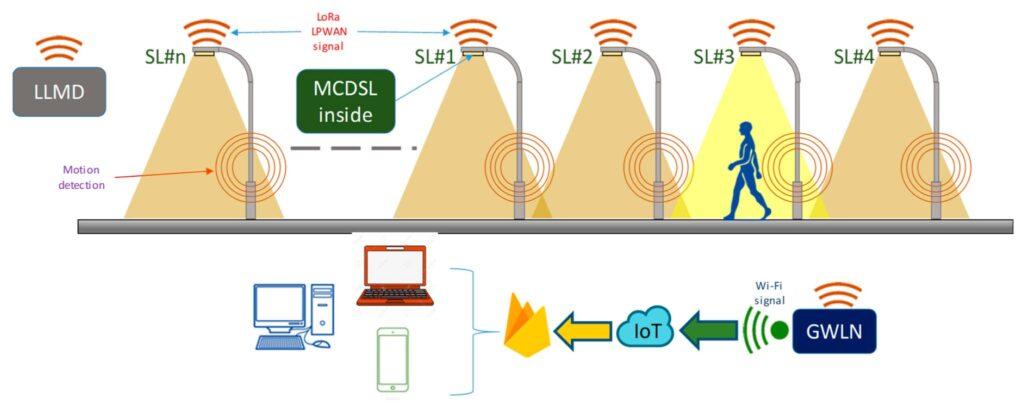Outline
- Introduction
- Assessment of Existing Systems
- Assessing the current lighting infrastructure
- Sensor positioning
- Understanding power capacity
- Compatibility Features: Universal Design Aspects of Photocell Sensors
- Compatibility features
- Standardized wiring configuration
- Manufacturing
- Integration Process: Steps to Integrate the Sensor into the System
- 1. Power Off the System
- 2. Select the Installation Location
- 3. Prepare the Wiring
- 4. Connect the Photocell Sensor
- 5. Mount the Sensor
- 6. Test the System
- 7. Adjust Sensitivity (If Necessary)
- Advantages Of Integration
- Challenges and Solutions
- 1. Compatibility Issues
- 2. Placement Challenges
- 3. Environmental Factors
- 4. System Conflicts
- The Bottom Line
Adopting outdoor photocell light sensors is a simple idea that increases energy efficiency and smooths operations. These devices are compatible with a variety of lights, including classical incandescent, fluorescent, and modern-day LED lights.
The key to their adaptability lies in their ability to detect ambient light levels and automatically adjust lighting based on pre-set thresholds. This conserves energy by reducing unnecessary illumination and extends the lifespan of lighting fixtures.
Whether in residential, commercial, or industrial applications, photocell sensors can be integrated into most lighting systems without significant modifications, making them a practical and cost-effective solution for improving overall system performance. This guide will comprehensively discuss the related international standardization, the integration process, and its pros and cons.

Assessment of Existing Systems
A thorough assessment is crucial before integrating outdoor photocell light sensors into an existing lighting system to ensure compatibility and optimal performance. Here are the details of important considerations.
Assessing the current lighting infrastructure
This phase involves conducting assessments which cover an inquiry into the kinds of lighting fixtures, controlling systems and electrical wiring. For example, older systems with high-intensity discharge (HID) lamps or fluorescent lights may have different voltages and control requirements when compared to modern LED systems.
Sensor positioning
Photovoltaic cells require an uninterrupted access to natural light so that they can operate effectively; hence sensor placement must be done strategically.
There might be a need for modification of the adjustment or placement of other sensors in case of systems where light fixtures are found under canopies or in shaded places. It is equally essential to take into account any existing regulating systems such as timers or dimmers; thus adjusting them is essential in order to avoid conflicts with these photoelectric cells.
Understanding power capacity
Finally, the overall power capacity of the system should be checked to accommodate the additional load, even though photocells typically consume minimal power. Identifying these requirements and limitations early in the process helps ensure a smooth and successful integration.
Compatibility Features: Universal Design Aspects of Photocell Sensors

Photocell light sensors are engineered with universal design principles that ensure they can be integrated into a wide variety of lighting systems. They include
Compatibility features
One of the key compatibility features is their broad voltage range, typically accommodating systems from 120V to 277V. This flexibility allows them to be used with everything from residential lighting to commercial and industrial setups without the need for extensive modifications.
Standardized wiring configuration
In this regard, most photocell sensors are designed with simple, three-wire connections that include line, load, and neutral. This configuration makes them easy to install across different types of lighting fixtures.
Furthermore, adjustable sensitivity settings are often found within photocells to enable users to control light levels, ultimately making them compatible with different climatic conditions.
Manufacturing
Finally, besides being compact and solidly built, modern photocell detectors can endure extreme outdoor conditions such as temperature extremes, dampness, and ultraviolet rays. This kind of strength enables them to last long and perform efficiently regardless of the application area.
Integration Process: Steps to Integrate the Sensor into the System
Integrating a photocell light sensor into an existing lighting system involves several key steps. Below is a step-by-step guide to ensure a smooth and efficient installation.

1. Power Off the System
Before commencing with the installation, investigate the recommendation of shutting down the entire lighting system power supply. This is a significant step that provides protection as well as avoding electric casualitites during the integration process.
2. Select the Installation Location
Select an appropriate location for the photocell sensor. It must be positioned at a place where there exists an unobstructed line-of-sight to ambient light while keeping away from obstructions like trees, buildings, and anything else that may shield its rays.
3. Prepare the Wiring
Identify three primary wires: line, load, and neutral. Generally speaking, these wires have colors: usually black for line, red or blue for load, and white for neutral in most systems. Ensure that these wires are well-stripped and prepared for connection.
4. Connect the Photocell Sensor
The corresponding system wires must be carefully attached to the photocell sensor wires. Wire connectors should then be secured to avoid any exposure at all times.
5. Mount the Sensor
Once wired, mount the sensor in the selected location. Ensure it is securely fastened and positioned correctly to detect the desired level of ambient light. If the sensor is adjustable, fine-tune its angle to optimize its performance.
6. Test the System
After installation, you need to restore back power to the lighting system. Test out if it works by shading it or putting in some form of darkness. Lights shall automatically go off and on based on light levels as detected by the sensor.
7. Adjust Sensitivity (If Necessary)
If the sensor has adjustable sensitivity, you may need to fine-tune it to match the specific lighting conditions of the environment. This can usually be done using a small dial or a set of controls on the sensor.
Following these steps ensures a successful integration of the photocell sensor, leading to an automated and energy-efficient lighting system.
Advantages Of Integration
There are many technical and practical benefits that can be derived from integrating photocell sensors into lighting systems.
One of the key advantages is energy efficiency. Photocell sensors automatically adjust lighting based on ambient light levels, ensuring that lights are only on when necessary therefore drastically saving on energy used.
Cost saving is imminent hence extending the lifespan of lighting fixtures; this ultimately saves on maintenance and replacement costs.
The use of photocell sensors provides automatic operation; thus they help in eliminating manual switching or timers. In parking lots, campuses as well as residential places this usage is very useful.
Additionally, photocell sensors reduce the carbon footprint associated with the over-consumption of electricity, thus advocating for environmental sustainability. For example, cities such as Los Angeles have embraced photocell sensor technology to develop smart lighting systems that are both energy-efficient and environmentally friendly.
Overall, photocell sensors form a seamless low-cost solution that enhances functionality as well as efficiency of lighting systems in various real-world applications.
Challenges and Solutions
Integrating photocell sensors into existing lighting systems can present several challenges, but these can be effectively managed with proper planning and solutions.
1. Compatibility Issues
One common challenge is ensuring that the photocell sensor is compatible with the existing lighting system, particularly in older setups. For this, before integration, assess the system’s specifications and select a photocell sensor with a wide voltage range and adaptable wiring options to ensure compatibility.
2. Placement Challenges
Correct positioning of the photocell sensor is vital for right light sensing. Barriers such as buildings, trees, or fixtures can be potential obstacles. The solution is simple: choose a location where there is no obstruction to natural light.
3. Environmental Factors
Severe weather conditions, including dew-drop, temperature extremes, wetness, or ultraviolet light exposure, can influence the efficiency and durability of photocell sensors. Always select sensors with sturdy, weather-resistant casings, and make sure they are rated for outdoor use in your special climatic situations.
4. System Conflicts
Existing control systems, like timers or dimmers, can conflict with the operation of photocell sensors, causing lights to behave unpredictably. Reconfigure or disable conflicting controls or integrate the photocell sensor with a smart lighting system that can harmonize all control elements.
The Bottom Line
Upgrading existing lighting systems with photocell sensors is a practical and efficient way to enhance energy savings, reduce costs, and improve system automation. For a seamless integration and reliable performance, consider Chi-Swear as a trusted supplier of high-quality photocells, ensuring your lighting system operates optimally in any environment.






